The interview with temple staff─ Mr. Shun-Yuan Tsai
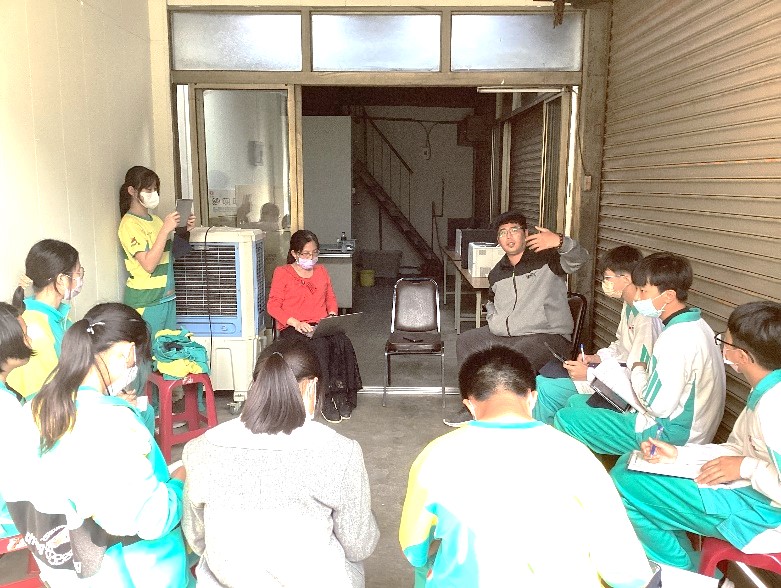
Mr. Tsai kindly accepted our interview.
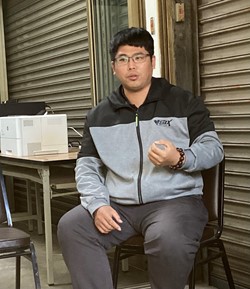
He told us many interesting stories about Nanyao Temple.
Renovation of Nanyao Temple
Mr. Tsai knows Nanyao Temple very well. In addition to introducing us to the local grade 3 historic site Nanyao Temple, he also answered a lot of questions we asked about the temple, including the upcoming major renovation of Nanyao Temple. Mr. Tsai said that Nanyao Temple is a county-designated historic site, and the Sanchuan Hall, Main Hall, and Second Hall are all historic sites. Owing to the long history, the wooden structure has been seriously damaged. If the temple is not renovated, the roof may fall off. This renovation is mainly intended for the main hall and Sanchuan Hall. It is expected that the renovation period will be at least two years. If painting is included, it may take up to 4 to 5 years, but the detailed duration is still being evaluated.
Nanyao Temple also underwent a large-scale renovation like this approximately 50 years ago. At present, the Ministry of Culture attaches great importance to the restoration of historic monuments and requires restorers of historic monuments to obtain license and meet qualification requirements. For this renovation, the temple staff even hold weekly meetings in order to “renovate the temple as before.” For example, the missing building accessories may need to be replaced with new ones, and the builders will have to try to find a master certified to restore traditional art works. The main method of renovating Nanyao Temple this time is to stabilize the temple body first, replace the beams and columns that have been seriously eaten by termites, and use chemicals to consolidate the wooden building parts that are still usable. Since wooden buildings in the past all used tenons and no nails, iron materials will also be considered for this renovation. Currently, the more difficult part to repair is the beams on both sides of the Mazu statue, as they are almost completely eaten away by termites. To replace the beams and columns without demolishing the temple, highly skilled craftsmen are required to implement the renovation, and the repair process is very cumbersome. Therefore, before the renovation is started, it is necessary to investigate, write a plan, apply for approval, and then proceed with the restoration. Even after restoration, termite control and temperature and humidity control must be continued to extend the life of historic monuments.
The total budget of such a large-scale renovation project is estimated to be NTD 8 million. Currently, the government has allocated a subsidy of NTD 65.57 million. In the future, there will be interior decoration and painting, which is expected to cost more than NTD 150 million in total!
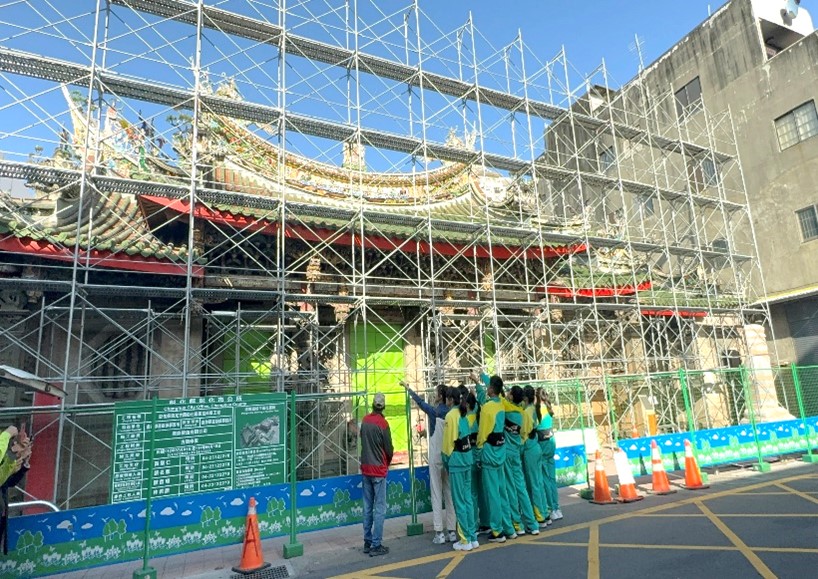
This is the first time we have seen Nanyao Temple undergoing a large-scale renovation.
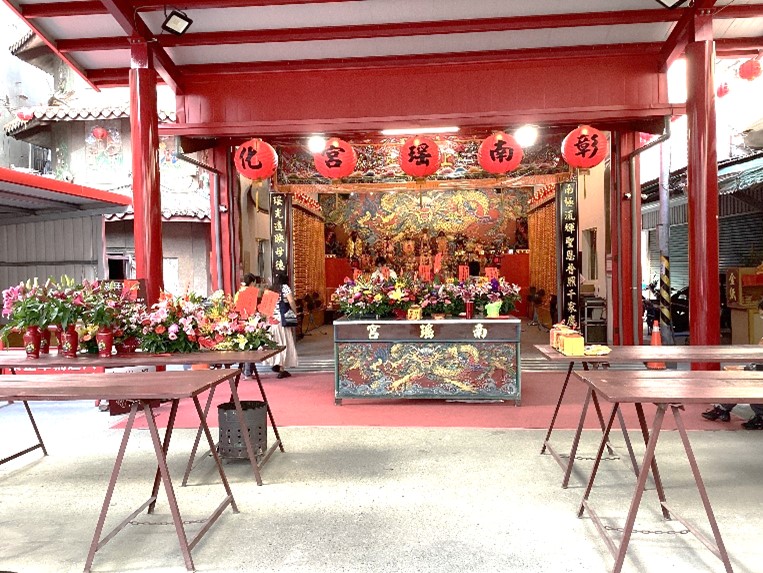
Due to the renovations, the place of worship has been relocated outside the temple.
The materials of statues
As the saying goes, “The first is paper, the second is soil, the third is wood, the fourth is stone, and the fifth is gold.” Mr. Tsai said that these are the common materials for making statues of gods, and this ranking order traditionally refers to the difficulty of “inviting god to stay in the statue.” In general, it is believed that paper can be easily used to invite the god to stay in the statue. There are many patrolling Wang Ye along the coast. Patrolling Wang Ye is usually invited through a ceremony, and the statue is made of “paper carving” by statue sprucing craftsmen. The Mazu statue in the main hall of Nanyao Temple is made of “clay sculpture,” while many statues today are made of “wood sculpture.” In addition, there are also some temples of Lord of the Land with statues of gods “carved in stone.” Sometimes in a small temple, after a stone is engraved with words, it is regarded as a statue for worshipping. The “golden” statues include the golden Mazu in Zhenlan Temple in Dajia and the golden Mazu in Tianhou Temple in Lukang. Besides, the Nanyao Temple also has a small golden Mazu placed in the sacred shrine.
In modern times, in addition to the above materials, there are also statues made of plastic and other materials. Nowadays, 3D scanning is used to carve statues of gods. Although it is fast and convenient, it lacks the warmth of hand carving because statue sprucing craftsmen carve the statues piece by piece, these hand-made statues are definitely unique works. In particular, the reason why people hire statue sprucing craftsmen to carve and worship statues of gods is usually because they think they have a bond with the statue.
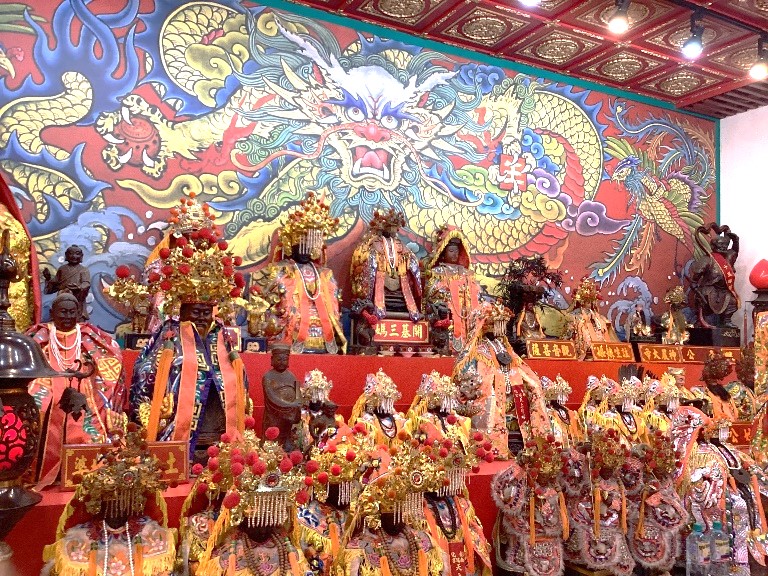
The statues are made of various materials.
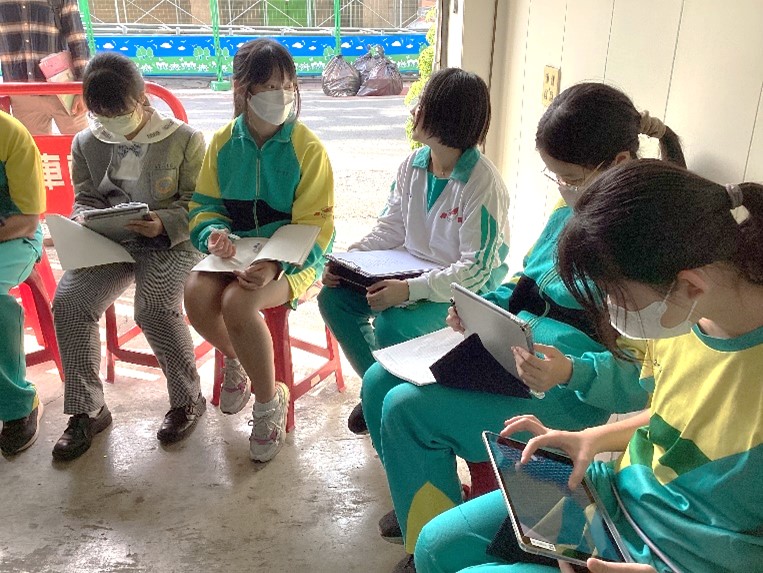
We diligently took notes of the interview content.
Sources of statues in Nanyao Temple
Most of the statues in Nanyao Temple are carved by statue sprucing craftsmen hired by the temple, and many are donated by believers. In the past, when the economy was underdeveloped, it was not easy to carve statues of gods. Therefore, people believed that carving statues of gods and giving them to temples was a blessing. At that time, many people were willing to spend money to make or repair statues of gods, and some believers would directly donate money to temples for the purpose of making or repairing statues of gods. For example, a while ago, the Sanguan dadi (Emperors of the Three Offices) statue in Nanyao Temple needed to be renovated, and the temple welcomed donations from the public.
Moreover, the “Green Statue” next to the Mazu statue in Nanyao Temple was originally a large banyan tree on the ground. It had to be cut down to build the temple. Therefore, a statue of god was carved from the trunk of banyan tree for worshipping, and some believers also considered the statue to be the god of medicine. Besides, the position where the Yanping Junwang statue is enshrined used to be the position where Master Carpenter Luban was enshrined, who is the patron saint of the brick kiln industry. Since most of the residents living nearby the Nanyao Temple engaged in brick kiln work in the past, there was a need to worship Master Carpenter Luban. This is also the origin of the name of Nanyao Temple. The longevity throne is dedicated to the people who donated money to build the temple in the past, to express gratitude for the merits of the predecessors, so that they and Mazu can be immersed in the incense for thousands of years.
The well-known Li Tie Guai stone statue in the temple was carved by Quanzhou Jiangxin Stone Factory, which built Nanyao Temple at that time. In order to thank the people here for giving the stone factory job opportunities, they carved a Li Tie Guai stone statue to express their gratitude. There are only two Li Tie Guai stone statues carved by Jiangxin Stone Factory, one is in Nanyao Temple, and the other is in a private collection in Lukang. The Li Tie Guai statue in Nanyao Temple was once stolen and has never been found so far. Therefore, the temple later asked someone to carve a replica of the stone statue. In addition to the Li Tie Guai stone statue, the incense burner for Tiandou Yuanshuai has also been stolen. Since these historical relics are precious cultural heritage, the temple currently has strict anti-theft operations.
Preservation and restoration of statues of gods
The production of statues of gods is very rigorous. When making wooden statues of gods, the master will let the wood sit until the moisture has dissipated, and then observe whether there are any cracks in the wood. The wood will only be used to carve the statues after careful evaluation. It is necessary to wait for the wood to dry naturally for inspection. After making the prototype out of the wood, the master must wait for the wood to dry for a while before fine carving and lacquer application. After the statue is applied with lacquer for protection, it is then painted, and finally covered with gold foil and surface soil. These layers of construction are to ensure the quality and long-term preservation of the statue. In general, if the statues placed in the sacred shrine are made of clay, special consideration must be given to humidity, and a dehumidifier should be used to reduce damage to the statues.
Statues of gods may become damaged after being used for a long time. For example, believers come to the temple to invite the Mazu statue as a guest throughout the year. Whenever believers encounter important events in life and appreciate the peaceful and smooth outcomes, they will intend to invite the Mazu statue to visit their home. Therefore, whenever a believer comes to invite a Mazu statue, Nanyao Temple will register it and control the movement of the statue. The shaking of the statue’s sedan chair when it is driven out, coupled with the surrounding firecrackers, will inevitably cause damage to the statue. If the statue is slightly damaged when it is returned to the temple, the temple will ask Master A-fa to help repair it. Most of the money for the repair of the statue comes from the temple’s oil money or donations from believers.
Nanyao Temple currently hires Master A-fa as the main master who repairs the statues. In addition to Master A-fa, there were other masters in the early days. Currently, the most famous master who makes statues in Changhua is Master A-fa. There is also a master who can restore statues. He lives behind Nanyao Temple. His Buddhist tool shop has no storefront or signboard. There is also a master who carves statues at the Sanshan Guowang Temple. Statues are natural products. When it comes to restoration of statues, many people like the heavier traces of time. There is a subjective feeling that the more weathered the statues, the more attractive they are.
There are many statues of gods that have been restored in Nanyao Temple. For example, the Hu Ye’s tail is made of clay and is often easily broken due to gravity. Master A-fa restored it a few years ago, but it seems to be in need of repair recently. Moreover, Master A-fa has also repaired the faces of Kaiji Sanma, Shizun Huima, Lao Sima, Sheng Sima, etc. Some statues even had unclear facial features due to the continuous application of lacquer during repairs by later generations. Master A-fa also helped restore the original appearance of these statues.
If major carving is required during repairs, Master A-fa will report it to the god in advance. A ritual of retreating the god to the furnace will be held. Finally, incense will be used to invite the god’s spiritual body to return to the statue.
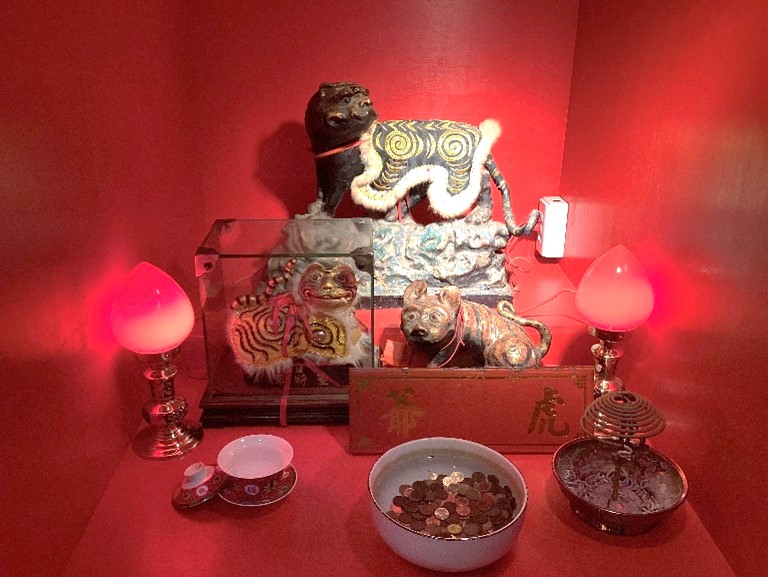
Statues of Hu Ye
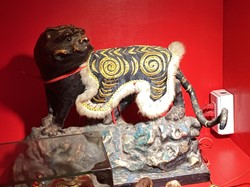
Master A-Fa has fixed the tail many times.
Some interesting facts about Faith
In the end, we also discussed with Mr. Tsai that many people now advocate online worship. So, will the existence of specific temples and statues become weaker, and the demand become less? Mr. Tsai believes that in traditional concepts, the Internet is not an orthodox ceremony after all. Faith is actually romantic where believers have to experience or understand it through their own actions. Sometimes they cannot be too rational and cannot express it clearly in words, but they will have strong feelings of their own. The so-called miracles usually happen to the individual, not to other people. Through faith, believers must be able to change themselves in order to change the final outcome of life. Gods are not just statues of gods. Gods enables us to learn the spirit of kindness and improvement. Improving self-cultivation and ideal practice through the support and supervision of faith is the ultimate goal of faith.
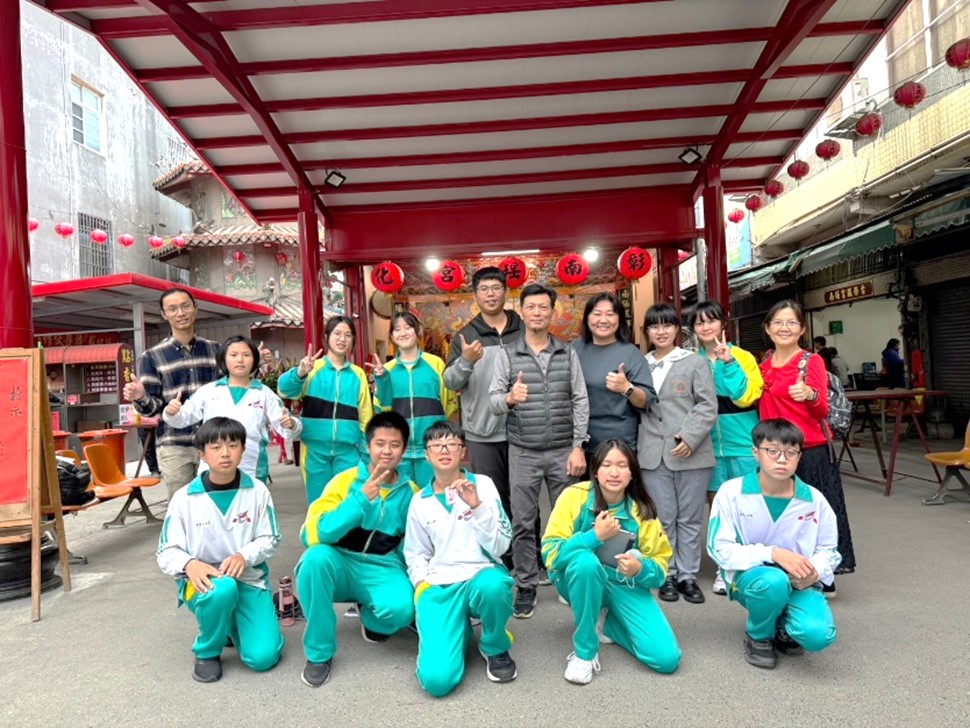
.png)
 Home
Home
